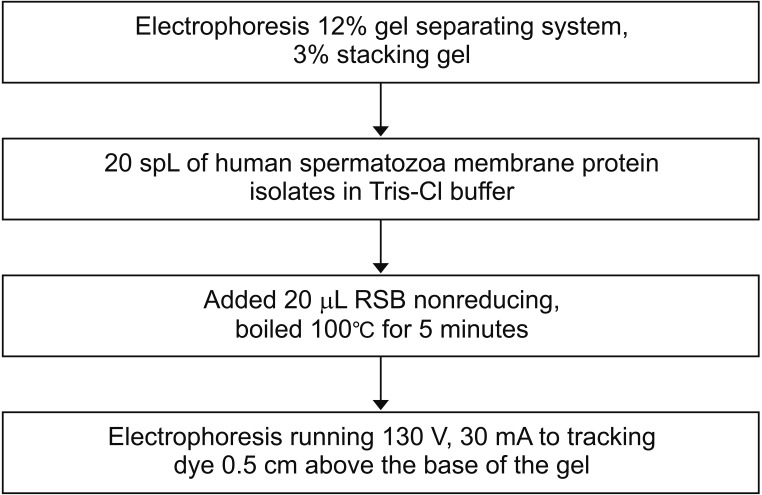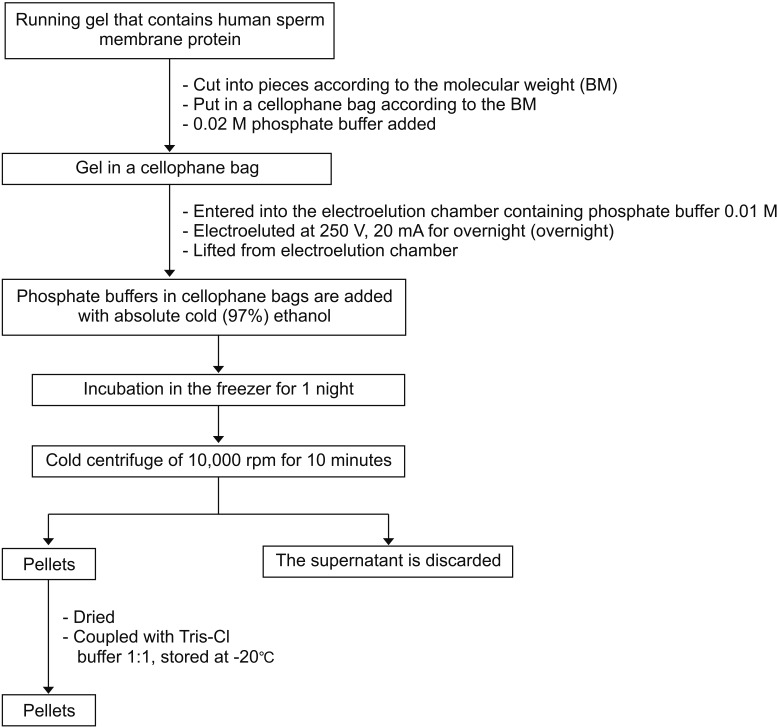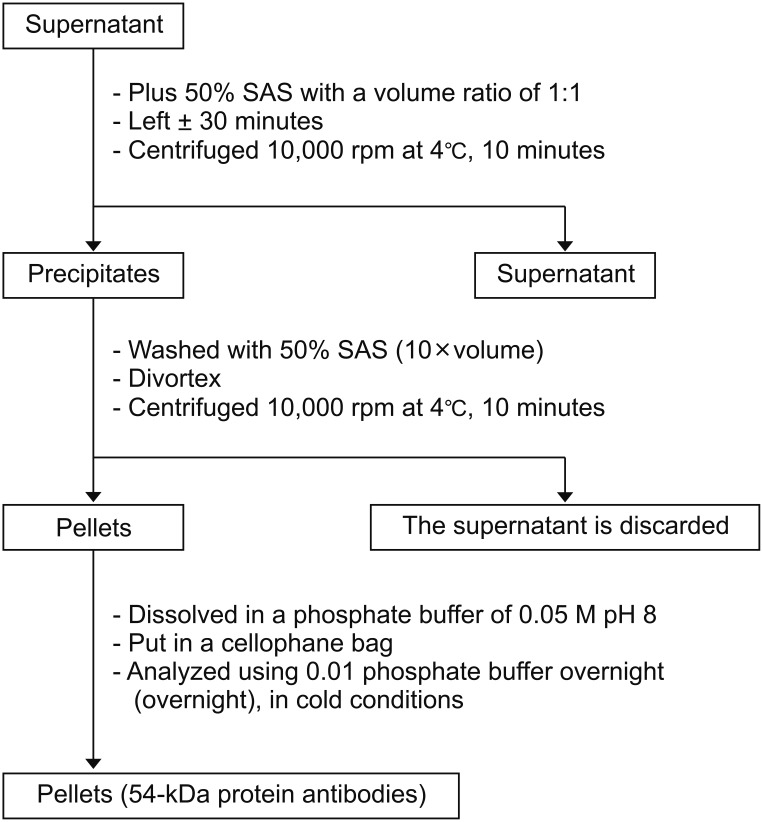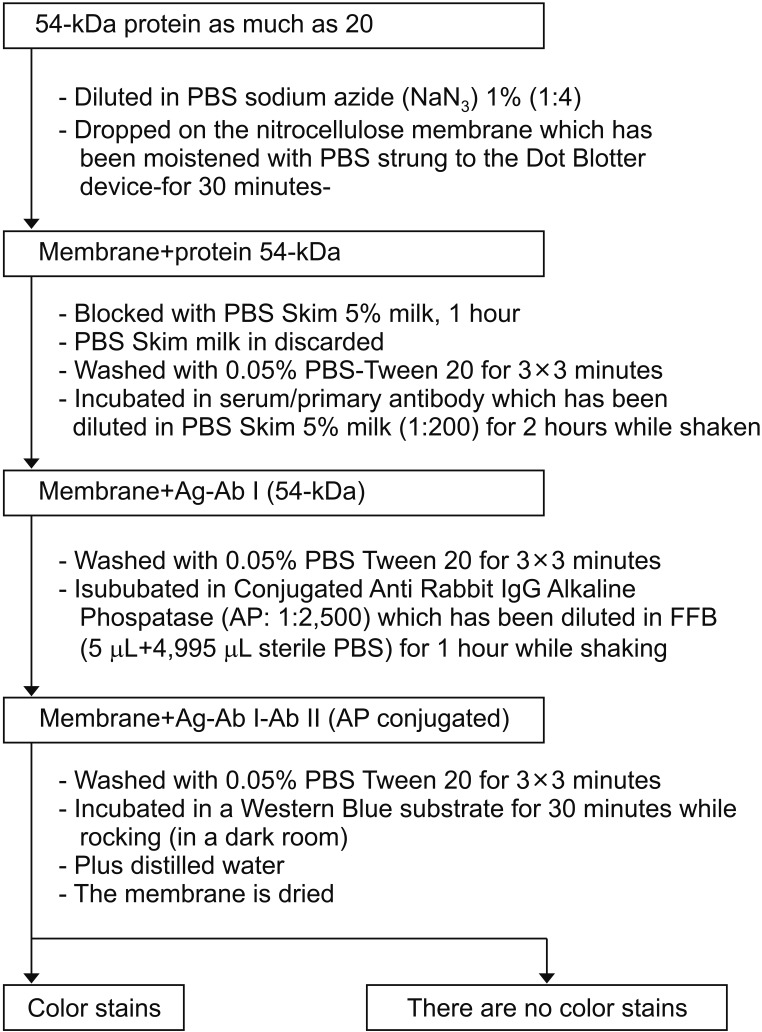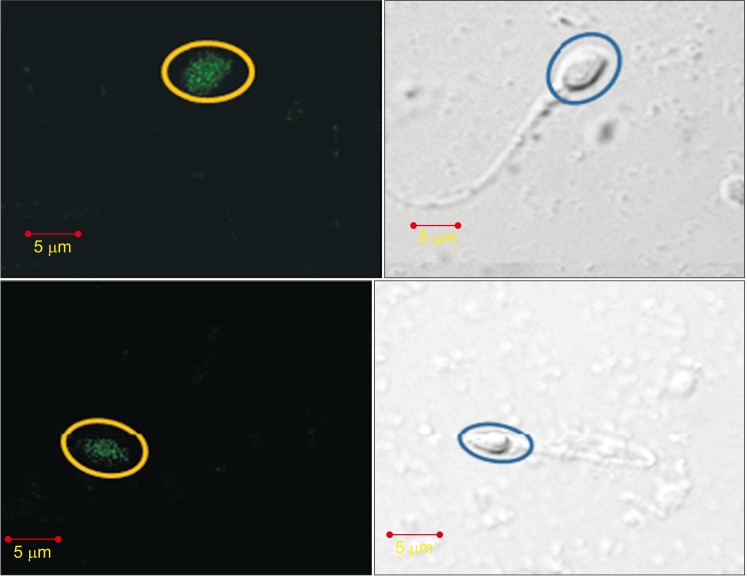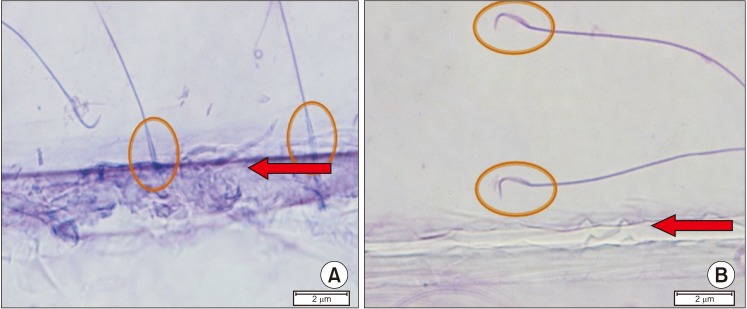Investig Clin Urol.
2019 Jul;60(4):303-311. 10.4111/icu.2019.60.4.303.
Human spermatozoa anti-proprotein convertase subtilisin/kexin type 4 synthesis using New Zealand rabbit for novel immunocontraception in males
- Affiliations
-
- 1Department of Urology, Faculty of Medicine, Universitas Syiah Kuala, Dr. Zainoel Abidin General Hospital, Banda Aceh, Indonesia.
- 2Department of Science, Universitas Brawijaya, Malang, Indonesia.
- 3Department of Clinical Pathology, Faculty of Medicine, Universitas Syiah Kuala, Dr. Zainoel Abidin General Hospital, Banda Aceh, Indonesia.
- 4Department of Urology, Faculty of Medicine, Universitas Padjadjaran, Hasan Sadikin Hospital, Bandung, Indonesia. mustafa.urologi@gmail.com
- KMID: 2450548
- DOI: http://doi.org/10.4111/icu.2019.60.4.303
Abstract
- PURPOSE
Proprotein convertase subtilisin/kexin type 4 (PCSK4, a 54-kDa protease) is expressed in the plasma membrane of the acrosome in human spermatozoa. It plays a critical role in penetrating the zona pellucida. Synthesis of human anti-PCSK4 might be important for novel male immunocontraception.
MATERIALS AND METHODS
We used semen from adult males as the source of antigen (acrosomal PCSK4). Isolation and antigen characterization were done by immunohistochemistry followed by electrophoresis. Purification of PCSK4 was done by the electroelution method, followed by immunization with an animal model (Oryctolagus cuniculus). Antibody was collected, purified, and tested by using Western blot and dot blot. Antibody in vitro potential testing was performed on human spermatozoa by laser scanning microscopy with rhodamine stain under a light microscope and on rat spermatozoa.
RESULTS
Human anti-PCSK4 bound with PCSK4 on the head of human spermatozoa and could interfere with rat spermatozoa activity to penetrate the oocyte.
CONCLUSIONS
The result of this study can be used as a basis to develop new immunocontraceptives targeted towards males. This study shows that antibodies from induction of PCSK4 from spermatozoa may hinder fertilization.
MeSH Terms
-
Acrosome
Adult
Animals
Antibodies
Blotting, Western
Cell Membrane
Contraception, Immunologic*
Electrophoresis
Fertilization
Head
Humans*
Immunization
Immunohistochemistry
In Vitro Techniques
Male*
Methods
Microscopy, Confocal
Models, Animal
New Zealand*
Oocytes
Proprotein Convertases
Rabbits*
Rats
Rhodamines
Semen
Spermatozoa*
Zona Pellucida
Antibodies
Proprotein Convertases
Rhodamines
Figure
Reference
-
1. Page ST, Amory JK, Bremner WJ. Advances in male contraception. Endocr Rev. 2008; 29:465–493. PMID: 18436704.
Article2. Gupta SK, Gupta N, Suman P, Choudhury S, Prakash K, Gupta T, et al. Zona pellucida-based contraceptive vaccines for human and animal utility. J Reprod Immunol. 2011; 88:240–246. PMID: 21377213.
Article3. Naz RK. Immunization with sperm antigens to induce contraception. In : Krause WKH, Naz RK, editors. Immune infertility. Heidelberg, Berlin: Springer;2009. p. 197–207.4. Naz RK. Human synthetic peptide vaccine for contraception targeting sperm. Arch Androl. 2004; 50:113–119. PMID: 14761842.
Article5. Gyamera-Acheampong C. The physiology and biochemistry of the fertility enzyme Proprotein Convertase Subtilisin/Kexin type 4 [dissertation]. Ottawa: University of Ottawa;2009.6. Naz RK. Vaccine for contraception targeting sperm. Immunol Rev. 1999; 171:193–201. PMID: 10582172.
Article7. Gyamera-Acheampong C, Sirois F, Denis NJ, Mishra P, Figeys D, Basak A, et al. The precursor to the germ cell-specific PCSK4 proteinase is inefficiently activated in transfected somatic cells: evidence of interaction with the BiP chaperone. Mol Cell Biochem. 2011; 348:43–52. PMID: 21080038.
Article8. Kurniawan D. Characterization of antibodies resulting from protein induction of human spermatozoa membrane 20 kDa (PM 20 kDa) [dissertation]. Malang: University Brawijaya;2009.9. Akmal M. Inhibin B potentially inhibits reversible spermatogenesis process through decreasing concentration and expression of follicle-stimulating hormone (FSH), CAMP responsive element modulator (CREM), protamine P2, and spermatozoa quality [dissertation]. Malang: University Brawijaya;2011.10. Aulani A. Analysis of glycosylated bovine zone pellucida-3 (bZP3dG) antibody induction for the development of contraceptive vaccines [dissertation]. Surabaya: University Airlangga;2003.11. Stanley J. Essentials of immunology and serology. New York: Thomson Learning;2002.12. Delves PJ, Seamus JM, Burton DR, Roitt IM. Roitt's essential immunology. 11 ed. Malden, Mass: Blackwell;2006.13. Goldberg AM. The principles of humane experimental technique: is it relevant today? ALTEX. 2010; 27:149–151.
Article14. Ferdowsian HR, Beck N. Ethical and scientific considerations regarding animal testing and research. PLoS One. 2011; 6:e24059. PMID: 21915280.
Article15. Gyamera-Acheampong C, Mbikay M. Proprotein convertase subtilisin/kexin type 4 in mammalian fertility: a review. Hum Reprod Update. 2009; 15:237–247. PMID: 19109312.
Article16. Bergeron F, Leduc R, Day R. Subtilase-like pro-protein convertases: from molecular specificity to therapeutic applications. J Mol Endocrinol. 2000; 24:1–22. PMID: 10656993.
Article17. Torii S, Yamagishi T, Murakami K, Nakayama K. Localization of Kex2-like processing endoproteases, furin and PC4, within mouse testis by in situ hybridization. FEBS Lett. 1993; 316:12–16. PMID: 8422932.
Article18. Seidah NG. The proprotein convertases, 20 years later. Methods Mol Biol. 2011; 768:23–57. PMID: 21805237.
Article19. Chamley LW, Clarke GN. Antisperm antibodies and conception. Semin Immunopathol. 2007; 29:169–184. PMID: 17621702.
Article20. Goldsby RA, Kindt TJ, Osborne BA. Immunology. California: W. H. Freeman and Company;2000.21. Parslow TG. Medical immunology. 10th ed. San Francisco: Mc Graw Hill;2003. p. 72–81.22. Burkin HR, Miller DJ. Zona pellucida protein binding ability of porcine sperm during epididymal maturation and the acrosome reaction. Dev Biol. 2000; 222:99–109. PMID: 10885749.
Article23. Esteves SC, Verza S Jr. Relationship of in vitro acrosome reaction to sperm function: an update. Open Reprod Sci J. 2011; 3:72–84.24. Gyamera-Acheampong C, Tantibhedhyangkul J, Weerachatyanukul W, Tadros H, Xu H, van de Loo JW, et al. Sperm from mice genetically deficient for the PCSK4 proteinase exhibit accelerated capacitation, precocious acrosome reaction, reduced binding to egg zona pellucida, and impaired fertilizing ability. Biol Reprod. 2006; 74:666–673. PMID: 16371590.
- Full Text Links
- Actions
-
Cited
- CITED
-
- Close
- Share
- Similar articles
-
- Proprotein convertase subtilisin/kexin type 9 inhibition in cardiovascular disease: current status and future perspectives
- Comparison of Serum PCSK9 Levels in Subjects with Normoglycemia, Impaired Fasting Glucose, and Impaired Glucose Tolerance
- Update on Familial Hypercholesterolemia: Diagnosis, Cardiovascular Risk, and Novel Therapeutics
- Update on the Pharmacologic Agents for Dyslipidemia
- Role of PCSK9 Inhibitors in Patients with Familial Hypercholesterolemia


